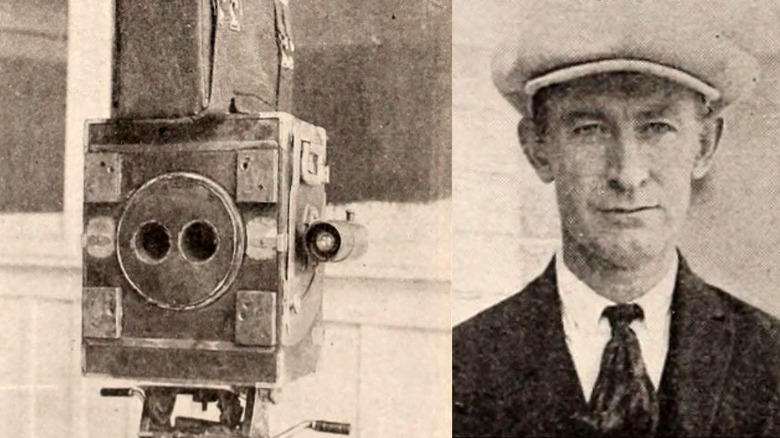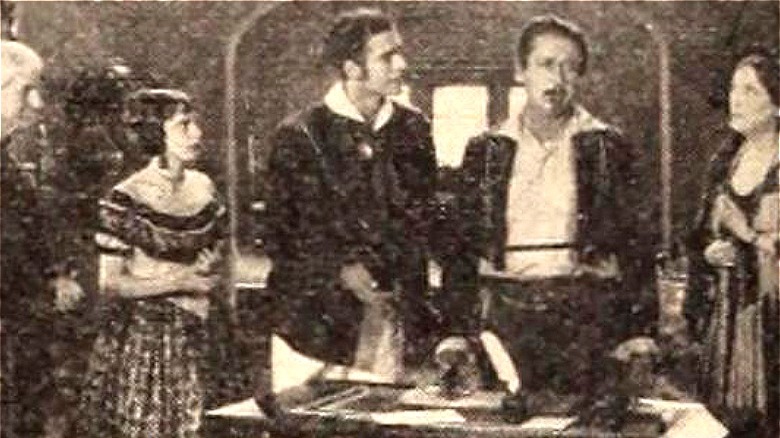The First-Ever 3D Movie, A Silent Film Released In The 1920s, Is Considered Lost For Good
The audience settled into their seats at the Ambassador Hotel Theatre in Los Angeles on Sept. 27, 1922, and adjusted the "spectacles" they were wearing to watch the film that evening. Before the feature film, they were treated to a short with scenes of California's Yosemite Valley, according to The Kamloops Telegram. Then the feature started. The audience couldn't believe what they were seeing. The Los Angeles Times reviewer gushed that it "makes you feel as if you are right there inside the picture with the characters."
For the first time in history, a paying audience sat watching a full-length 3D film, billed at the time as "stereoscopic." The movie, "The Power of Love," used the anaglyph system involving two film strips that had been shot simultaneously and printed in two colors, per "Bad Fads." Viewers wore glasses with one red lens and one cyan (blue-green) lens to watch the two film strips that were projected at the same time, giving the film an illusion of depth.
A surge of technological advancements in Hollywood
"The Power of Love" came out during an era of major advancements in filmmaking on both the technological level and with cinematographic techniques. Between 1920 and 1930, the innovations in the mechanics of movie-making included the introduction of sound at the end of the decade and early attempts with colorization, per Filmsite. On the artistic side, new styles of lighting, editing, makeup, and set design helped transform filmmaking, according to Inquiries Journal.
The idea of creating 3D films went back all the way to the 1890s when William Friese-Greene, a British inventor, patented an early, impractical system using bulky contraptions required to view the film, per Interesting Engineering. The first anaglyph system for films had a test run in 1915 in New York City. Edwin S. Porter, the director of the groundbreaking 1903 film "The Great Train Robbery," showed several 3D shorts but did nothing with the system, according to The Guardian. Seven years later, "The Power of Love," a black-and-white silent film, became the first full-length 3D film. Harry K. Fairall, one of its producers, was also the inventor of the equipment used to shoot and project the film, per The Franklin Repository.
The film is presumed lost like thousands of others from the era
The film, a period piece set in 19th century California, tells the story of a young woman promised by her father to a scoundrel who tries to frame her true love for murder, per lMDB. Besides being the first full-length 3D film, it was also the first to offer the viewer a choice between endings, one tragic, and the other happy, depending on whether they chose to view the end through the red or cyan lens, per ACMI. "The Power of Love" received good publicity for both its technical achievements and its storytelling. The Los Angeles Times called it "a charming little picture" and found the 3D effects "new" and "startling." The enthusiastic response wasn't enough to get the movie or its 3D process any market traction.
"The Power of Love" had only one other screening, in New York City, for the press and exhibitors before disappearing, per "A Brief History of Great Inventions." The film was later released in 2D under a different name the next year, according to Silent Era. It seems Fairall was just a little too ahead of the times as it would take another 30 years for 3D films to have their heyday in the 1950s. No one knows what became of the movie and it is presumed lost, according to Lost Films.


